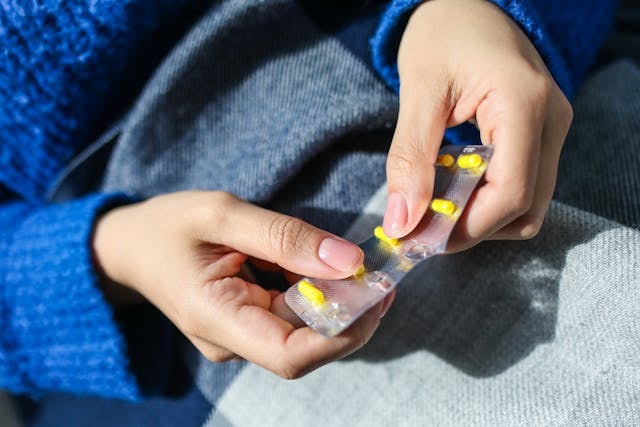
What are Typhoid Symptoms? What is the Typhoid Fever Treatment?
Time to read 3 min
Time to read 3 min
There are several symptoms of typhoid fever that you should track to minimize the risk of inflammation, swelling, and internal health issues. Typhoid fever is more prevalent during the rainy season or in areas that are more tropical, which is why taking the right precautions such as hygiene and cleaning will be vital.
People with typhoid fever can opt for antibiotics as a primary treatment mechanism, after getting tested for the bacteria. Typhoid can present many symptoms, which is why it is important to get tested immediately when you are experiencing the symptoms and have been exposed to potential contaminants.
Of the several symptoms present when you have typhoid fever, the main ones are present below. You can experience these symptoms for a few days or more, with fever being one of the major signs that there may be an underlying infection present.
You may get constant diarrhoea and other problems with the gastric system, if you've been in contact with contaminated food in the past few days. You can also experience pain in the stomach area if you have symptoms that are connected with typhoid fever.
If you have fever for more than a few days then it can be a symptom for typhoid fever. In the case that it is enteric fever or paratyphoid fever, then the risk of the presence of salmonella enterica serovars can be there.
You need to be careful of a minimal appetite when you have a fever or you may be at a higher risk to the extent of getting the bacteria. You should focus on underlying issues that may be causing this symptom, and get tested immediately when you also have a fever or other condition.
You can have a sensation of bloating or nausea which can be related to the typhoid fever. You can get tested and start the typhoid fever treatment so that you're able to recover in a timely manner. Your bloating and nausea sensation should subside when you start medication.
You can experience a general sense of weakness, with low strength and energy. You can also experience body aches and pains, which could be related to the high stress on the immune system of the body.
You can also experience stomach pain which could be connected to the bacteria presence in the body and your immune system managing it. Your stomach pain could also be as a result of low fluids and intense cramping.
Cramping can feel like your body is contracting and is unable to move after a point. You can experience this type of cramping when you have a bacterial infection or typhoid in many cases. You should take over the counter medication to help with the cramping.
The typhoid fever treatment involves a complete diagnosis of the individual for the bacteria. This includes the Widal test which can be used to diagnose the condition through the rapid blood test. After the positive result is received, then medication is prescribed.
Generally, ciprofloxacin or ofloxacin is prescribed for typhoid fever and symptoms are closely monitored for the individual. Depending on the age and risk factors for the person, secondary medication is also prescribed to help patients.
You can curtail the spreading of typhoid fever in your house by following these important strategies. You can also reduce the risk of typhoid fever emerging again after the treatment has been completed.
You can get clean water supplied to your home and avoid outside water or ice sources. You can potentially get typhoid fever when you have been in contact with water that may contain the bacteria.
By consuming outside food, you can ensure that you're protected from the bacteria. You can reduce your risk of consuming outside food by opting for higher quality restaurants and preventing roadside food vendor consumption.
You need to ensure that there are no areas within the house where the bacteria can be present by ensuring optimal hygiene. If someone in the house has typhoid, then maintaining complete hygiene practices will be ideal.
Still water sources can lead to a range of issues with malaria, dengue, and typhoid. You can remove any areas where still water can be present to ensure that you're protected from potential risk areas.
* * Medical Disclaimer - The following information is for educational purposes only. No information provided on this website, including text, graphic, and images, are intended as substitutes for professional medical advice. Please consult with your doctor about specific medical advice pertaining to your condition(s).

